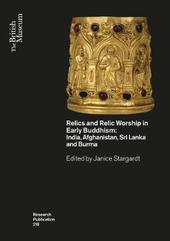
|
Relics and Relic Worship in Early Buddhism: India, Afghanistan, Sri Lanka and Burma
Paperback
Main Details
Description
Among world religions, only Buddhism and Christianity attach a central significance to the role of relics. These two traditions, however, are different in both conceptual and material terms. In Buddhism, the most sacred relics are those considered parts of the cremated remains of the Buddha - a hair, a tooth, a small fragment of bone - or the tiny bead-like relics generated by the Buddha before entering nirvana. In contrast, Christianity venerates objects associated with Christ such as the thorns, the cross or his robe. This first generation of relics were later joined by both the bodily relics and items used by the saints. The papers in this volume, the culmination of a research project focussing on relic worship and Buddhism, cover a rich variety of themes. Subjects include a discussion of what constitutes a relic according to primary and secondary sources, as well as an analysis of the special terminology related to relic worship. Other chapters focus on the placement and treatment of relics in situ, in addition to the wider archaeological contexts for relics, relic chambers and reliquaries. New perspectives are also offered on the relics and reliquaries themselves, for example, the golden Bimaran casket from Afghanistan, an exceptional example of metalwork from the 1st century AD. The final chapter explores the spread of Buddhism to Burma and the evidence of the vibrant relic culture that has been found there, including some of the oldest surviving Pali inscriptions in the world, a text on gold leaves deposited in a relic chamber.
|